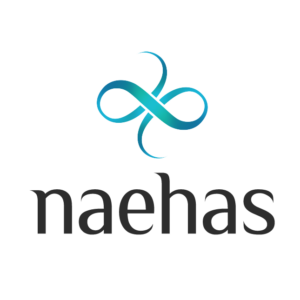The enormity of expectations on finserv martech teams is daunting. Keeping up with technology and finding proven strategies is made more challenging given the industry’s increasing regulations and heightened competition. As part of our resource library, we’re sharing case studies on marketing disclosures, with disclosure automation success stories. These offer marketing professionals lessons learned on how banking leaders find solutions to gain, and maintain, a competitive edge.
This newest update offers insights from a Top 5 financial services firm who leveraged our disclosure management platform to transform their process.
We’ve been seeing and addressing common pain points in marketing disclosures for quite some time. More than ever, banking, financial advisory, and wealth management institutions are struggling to put out more offers, faster and with less errors. Disclosure management is challenging, particularly when teams are working with legacy systems and manual processes that wreak havoc on efficiency and accuracy, each critical to compliance.
Typical challenges:
- Low efficiency
- High Cycle Time
- No Scalability
- Compliance Risk
- Error in Disclosures
- Inconsistent Channels
As if this isn’t enough to overcome, many firms are dealing with a fragmented and highly decentralized disclosure content and delivery process. Marketing disclosure teams know well how manual processes hinder agility and responsiveness amidst fast-paced growth and increasing regulations. Increasing costs are incurred as teams scale, managing rework, auditing, remediation. The average lead time is 3-4 months. This is compounded by manpower hours to control for errors inherent in a manual process. The lack of efficiencies are costing businesses time and money. Internal teams handling disclosure management are overburdened, hindering the ability to land and expand customer relationships.
What’s needed? Fundamental fixes to common but crippling disclosure management woes. The answer: Disclosure automation. The basic request we receive is multi-pronged: to provide finserv marketing teams the ability to better manage risk, typically by defining clear ownership, and designing systems and processes to operate at scale. Simplifying and standardizing the end-to-end process, applying governance and controls is vital. Further, integrating enabling technology holds the key to improved workflow automation, content reuse, and smart compliance validation with comprehensive audit trails. Reducing risk and improving accuracy are marketing musts, so systematic validation of controls, to generate dramatic efficiencies, is essential.
Deep Dive into Disclosure Automation
Getting it right is a matter of finding the right platform and partner. From there, leveraging the platform technology leads to digital transformation to drive process improvements.
In this instance, the client is a leading wealth management firm. Our challenge was clear: Guide the client in leveraging technology to improve a disclosure management process that was extremely inefficient, costly, and error-prone. A business unit of 10 people regularly conducts 30-70 disclosure reviews monthly. The process includes multiple rounds of creative and legal approvals and two outside advertising agencies.
The Naehas Disclosure Management platform is poised to solve these issues. It does so by realizing workflow efficiencies, providing supporting tools, storage and cycle times. Preliminary findings lead the client to anticipate solid outcomes.
Success Criteria, important to establish early in the process, helps drive better results. Objectives:
- Streamline the process and eliminate redundancies
- Reduce the numerous creative and legal approvals
- Improve accuracy and compliance results
How is the platform positioned to answer the need? On many levels. Initial findings lead to these anticipated outcomes:
- Develop the global disclosure content directory and organize data into content sets
- Develop a business logic of keeping Schumer versions as global “matrix” with embedded rules
- Reengineer creatives to include a drop down box to assign the appropriate disclosure version to each package
The business impact on our leading wealth management firm client, according to preliminary findings in testing, includes significant operational outcomes. The expected results, as indicated by initial outcomes, reinforce the value of technology partners in collaborating to identify, address and overcome those primary pain points with which so many finserv institutions, of all types and sizes, grapple. In this instance, a couple of key initial outcomes lend themselves to delivering significant value:
- Instead of single users updating 30-70 versions independently, one user updates all source versions and publishes global update in under an hour (300-700 versions)
- Anticipating outside ad agencies eliminated and creative and legal review reduced to final sign off
What is the client anticipating? How did the marketing team respond? One line speaks volumes, validating the powerful impact that improved processes can deliver after digitally transforming disclosure management: Responding to initial outcomes, the client’s marketing leader reported: “Everything was implemented in three months and worked like magic.”
Utilizing automation in disclosure management is a valuable solution to common challenges. Martech leaders looking to improve efficiency and accuracy will benefit from learning how disclosure automation helps streamline compliance processes.






